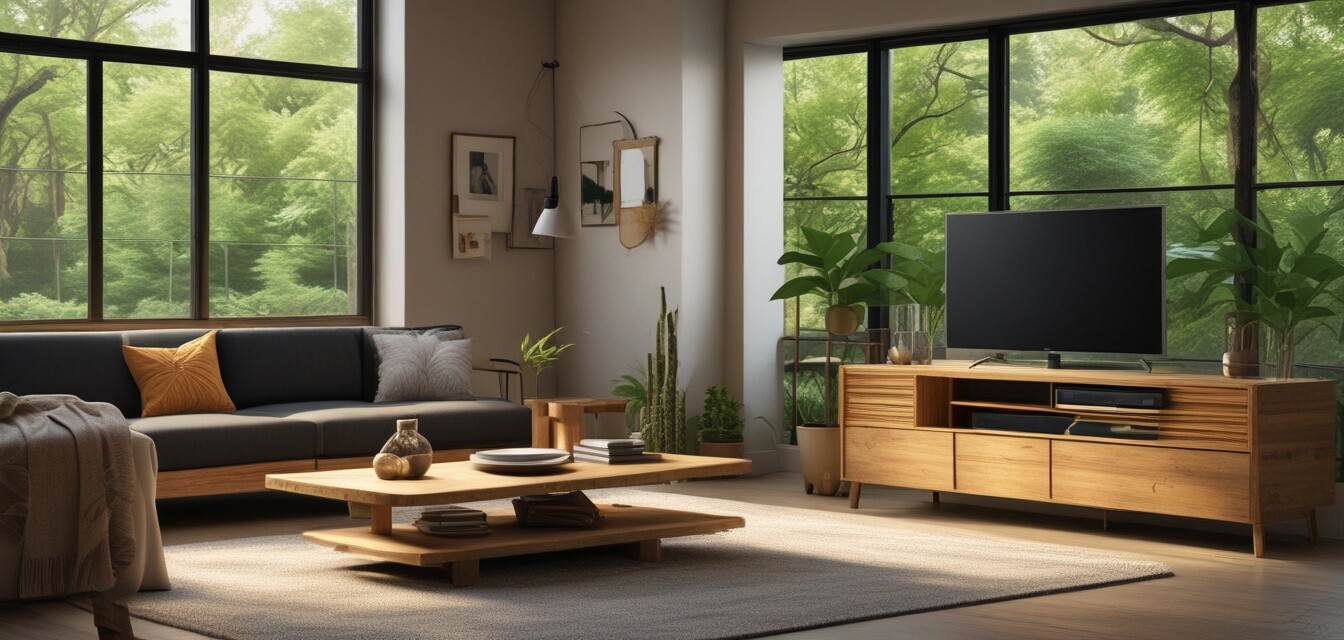
Sustainability as a Lifestyle: The Future of Furniture
Key Takeaways
- Sustainability is transforming consumer preferences in the furniture industry.
- Eco-friendly materials like reclaimed wood and bamboo are gaining popularity.
- Design trends are aligning with sustainable practices, affecting aesthetic choices.
- Consumer awareness is rising as people seek environmentally responsible options.
Sustainability has become more than just a buzzword. It's evolving into a vital lifestyle choice that significantly impacts consumer preferences, especially in the realm of home furnishings. As individuals become increasingly aware of their ecological footprint, the demand for sustainable furniture options is more prominent than ever. This article will dive into how sustainability is shaping the future of furniture, discussing various aspects and trends influencing this transformation.
The Rise of Sustainable Materials
In recent years, there has been a noticeable shift toward materials that are environmentally friendly. Consumers are more inclined to choose furniture made from sustainable resources. Key materials shaping this trend include:
| Material | Benefits | Common Uses |
|---|---|---|
| Reclaimed Wood | Reduces deforestation, unique aesthetics | Tables, chairs, TV stands |
| Bamboo | Rapidly renewable, light, resilient | Cabinets, shelving |
| Recycled Metal | Durability, energy-saving production | Furniture frames, accents |
| Natural Fabrics | Biodegradable, chemical-free | Cushions, upholstery |
Consumer Preferences and Trends
The demand for sustainable furniture has altered consumer preferences significantly. Today's buyers are looking for eco-friendly options that align with their values. Some of the trends emerging from this shift include:
- Minimalism: Consumers are gravitating towards simple designs that utilize fewer materials.
- Modular Furniture: Versatile pieces that can adapt to multiple uses or spaces.
- Vintage and Upcycled Pieces: Increased interest in second-hand furniture contributing to waste reduction.
Changing Aesthetics
With sustainability influencing style choices, designers are integrating eco-friendly elements into their aesthetic. Sustainable furniture now not only focuses on being good for the planet but also becoming visually appealing. Here are some aesthetic trends linked to sustainability:
- Neutral Color Palettes
- Natural Texture
- Sleek Lines and Form
The Impact of Technology on Sustainable Furniture
Innovative technologies are enabling manufacturers to produce furniture that is not only aesthetically pleasing but also sustainable. Here are some technological advancements helping in this transformation:
- 3D Printing: Allows for material efficiency and the creation of complex designs with minimal waste.
- Smart Manufacturing: Reduces energy consumption and optimizes resource use during the production process.
- Eco-friendly Finishes: Non-toxic paints and varnishes are increasingly utilized, ensuring that sustainability extends to every element of furniture design.
An Eco-friendly Lifestyle
Transitioning to a sustainable lifestyle goes beyond mere furniture choices. Here are some ways to embrace an eco-friendly lifestyle in your home:
Tips for Sustainable Living
- Opt for energy-efficient appliances.
- Choose products made from recycled or reclaimed materials.
- Support brands that are committed to sustainable practices.
- Educate yourself on sustainable design principles.
Conclusion
The future of furniture is undeniably intertwined with the principles of sustainability. Consumers are increasingly adopting eco-friendly practices, which shape the market dynamics for furniture production. As we embrace new trends in design, materials, and technology, it becomes evident that sustainability is not just a fad but a way of life. For those interested in exploring more about sustainable TV stands, or other eco-friendly furniture options, the journey toward creating a greener lifestyle has never been more accessible.
Pros
- Supports environmental preservation.
- Often leads to unique and appealing aesthetics.
- Promotes longevity and durability in products.
Cons
- Potentially higher initial costs.
- Limited options in traditional stores.
- Availability issues in certain regions.
Join us in keeping up with the latest news and trends in sustainable furniture as we explore how consumer behavior is revolutionizing the furniture industry. Together, we can embrace a greener future, one piece of furniture at a time.